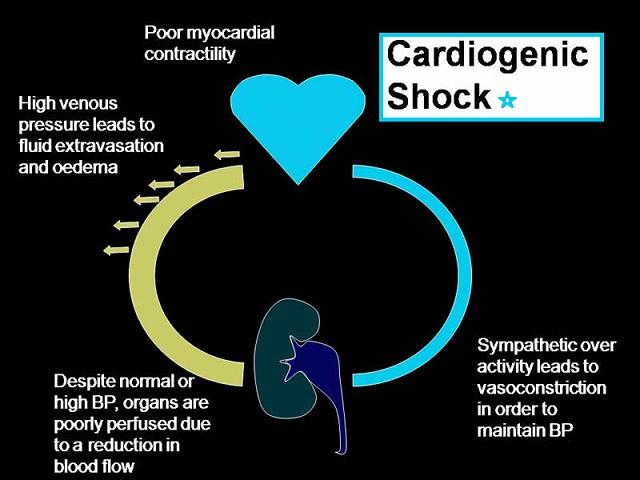Shock definition symptoms treatment
What is a shock?
Shock (шок, الصدمة) is a life-threatening condition caused by inadequate blood flow, which may lead to reversible cell injury. However, without prompt treatment, poor cellular perfusion (malperfusion or hypoperfusion) can cause irreversible cell injury. Poor perfusion occurs when blood pressure drops to extremely low levels.[1]
If left untreated, a shock is lethal.
What are the signs and symptoms of shock?
Common signs and symptoms of a Shock include:
- Pale skin
- Tachycardia or rapid pulse
- Hyperventilation or rapid and deep breathing
- Vomiting and feeling ill
- Gazing as if the person is staring, sometimes the pupils are dilated
- Dizziness, Fatigue, and Feeling faint, the patient feels himself weakened or stunned
- Anxious, in a delirium like state
- Severe hypotension due to decreased cardiac output
- Cold clammy skin due to decreased cardiac output and hypoperfusion of tissue
- Edema in foot and ankle that usually develops as a result of a blood clot in the deep veins of the lower leg. Venous thromboembolism (VTE), including deep vein thrombosis (DVT) usually develops as a result of slow flowing blood around venous valve sinuses.
Late onset symptoms include:
- Oliguria or decreased urine output due to renal failure
- Dyspnea or shortness of breath due to lung failure or acute respiratory distress syndrome (ARDS)
- GI bleeding and paralytic ileus due to gastrointestinal lesions
If left untreated, it can lead to death due to cardiorespiratory failure.
What to do if you suspect a shock?
Please follow the steps listed below if you suspect a shock, though being asymptomatic in the post traumatic period is common.
- Immediately call 911 or dial any local emergency number.[1][5]
- Check for the vital signs of circulation and respiration (activity, breath, movement), and if absent begin CPR.[1][5][7]
- Put the patient in shock position, ask the person (lying down on his back) to put one feet over another, or just to elevate his legs above heart level, raise the feet above head level, if this position/movement proves painful or if raising the legs will cause more injury, then ask the patient to stay still.[1][6][7]
- Keep the patient warm and relaxed, by loosening his belts, removing tight clothes… and giving him a blanket.
- You shouldn’t give food nor drink to a person in shock, even if the patient complains of thirst or hunger.[1][8]
- In case of vomiting or mouth bleeds, turn the person on his side to prevent chocking.
- Try treating the patient’s injuries, such as trauma(s) or fractured bone(s).
Causes
Why do people go into shock and what happens in shock?
Shocks can be caused by any injury or condition that reduces blood flow, such as trauma, heatstroke, losing blood, anaphylaxis shock, sepsis infection, poisoning, and many other causes. When a person is in a shock, then his or her organs aren’t fed well with oxygen, this insufficiency causes temporary rather than permanent cell injury, but without prompt treatment the condition can be fatal, as it can lead to permanent organ damage![1][2][3]
Some of the causes of shock include:
- Hypovolemia is a state of decreased blood volume that occurs with hemorrhage (bleeding), fluid loss, or dehydration
- Heart failure is a condition that occurs when the heart is unable to pump efficiently to maintain normal blood pressure to meet the body’s needs, which is often caused by myocardial or valvular disease
- Vasodilatation or dilation of blood vessels that results from relaxation of smooth muscle cells within the blood vessels. Pathological vasodilation occurs with anaphylaxis, sepsis, neurogenic impulses, etc.
What are the complications of shock?
If left untreated, shock can cause life-threatening conditions, such as:
- Renal Failure
- Somnolence and coma
- Gastrointestinal lesions
- Lung failure and ARDS
Without prompt treatment, it can lead to death due to cardiorespiratory failure.
References
Verified by: Dr.Diab (November 2, 2017)
Citation: Dr.Diab. (November 2, 2017). Shock definition symptoms treatment. Medcoi Journal of Medicine, 13(2). urn:medcoi:article1160.












There are no comments yet
Or use one of these social networks